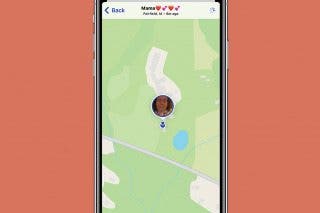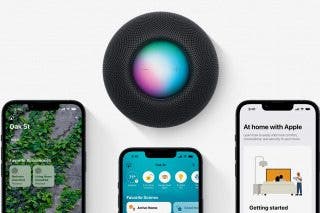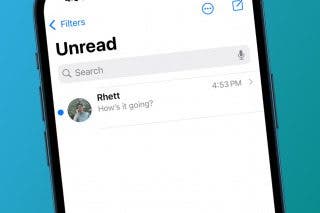The History of Every iPhone Model from 2007–2025


What to Know
- The first iPhone was released in 2007 and sold roughly 300,000 in the first weekend!
- Apple has released a total of 51 different iPhone models, including the latest iPhone 17 lineup.
- The iPhone 17 lineup, along with the iPhone Air, became available in September 2025.
What was the first iPhone to come out? When did the first iPhone come out? We have the full history of the iPhone, from the first iPhone to the iPhone 17. This article will cover the evolution of iPhones over the years and discuss the notable changes made with each release.
The History of Every iPhone Model from 2007–2025
How do you tell which iPhone model you have? We'll walk you through all the iPhone generations in order! Let's explore the long line of iPhone generations through the years. For more great Apple device identification tutorials, check out our free Tip of the Day.
iPhone Models in Order:
iPhone
The First iPhone Release Date: June 29, 2007
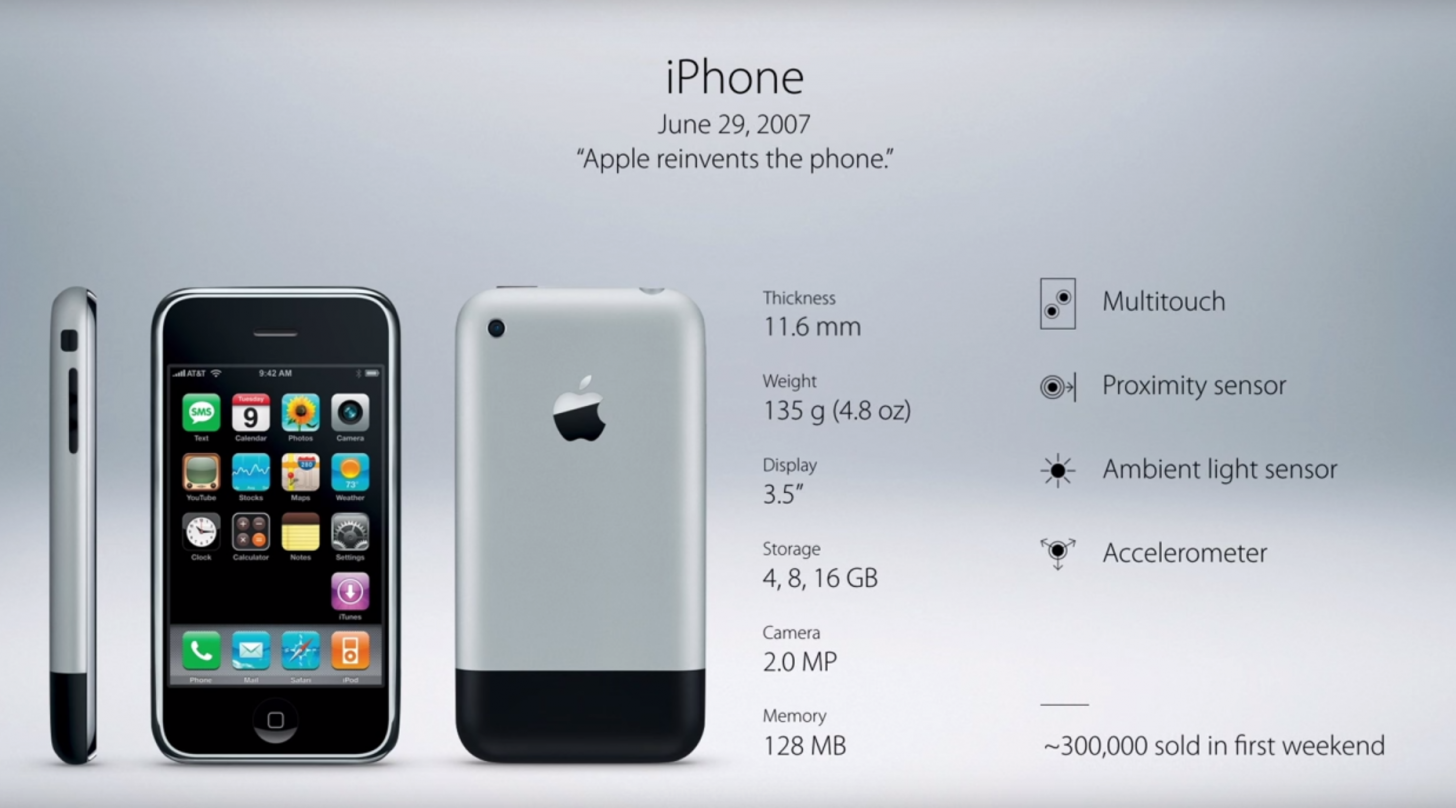
Can you believe 16 GB is all you could put on the first iPhone? Granted, there wasn't nearly as much data to put on the iPhone yet and certainly no App Store. But you had access to the internet on a screen you could actually see it on, unlike the flip and slider phones of the time. And it could only handle 128 MB of memory. The camera was 2.0 megapixels—so, terrible. But a phone with a camera! Holy moly!
As a fun aside, there actually isn't an iPhone 2. From the first iPhone, Apple leapfrogged right over this number to the iPhone 3G and 3GS.
iPhone 3G
Release Date: July 11, 2008
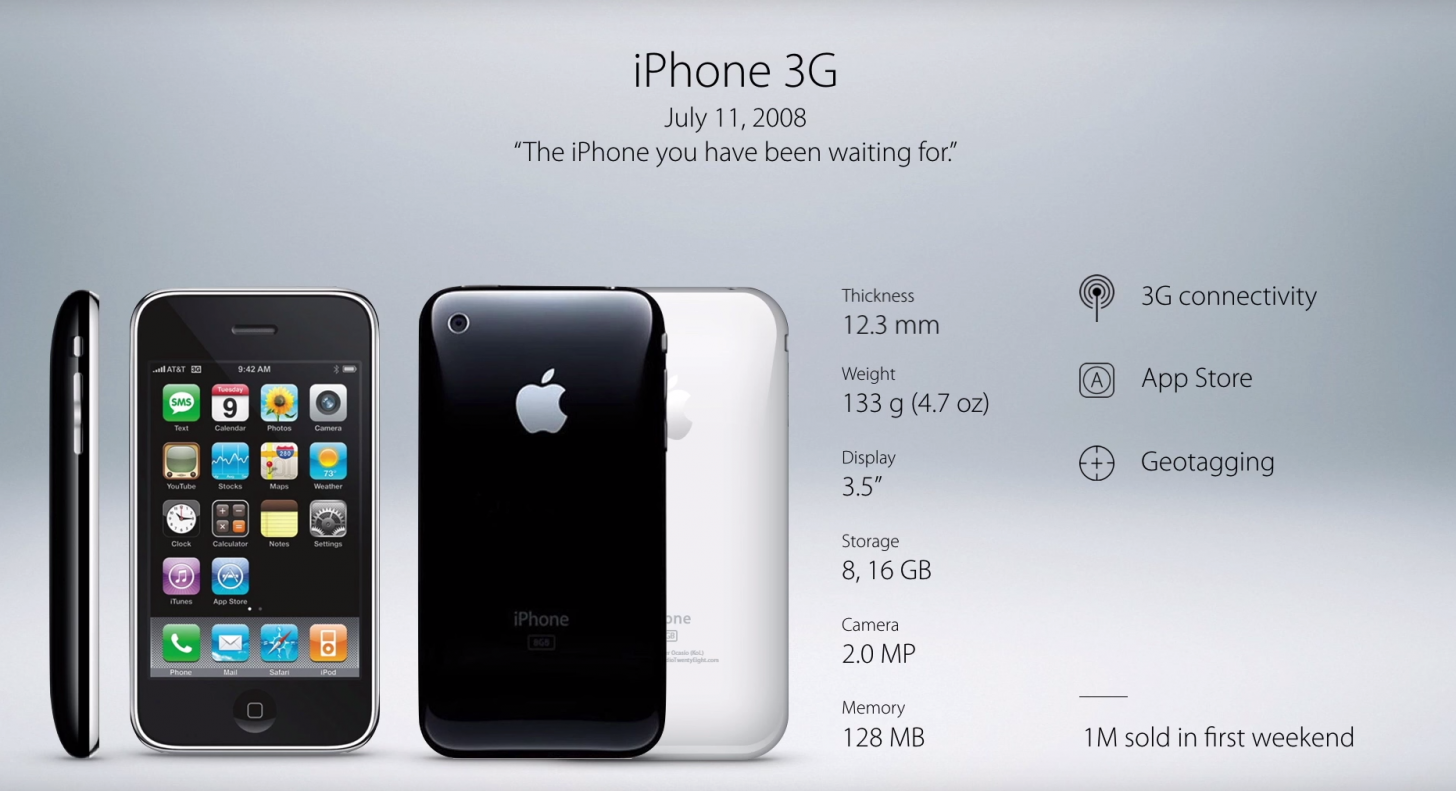
As far as internal specs go, the iPhone 3G wasn't much different than the original iPhone. But now there was an App Store! This iPhone got its moniker for its 3G connectivity, which meant access to internet you could actually use without wanting to throw the iPhone across the room.
iPhone 3GS
Release Date: June 19, 2009
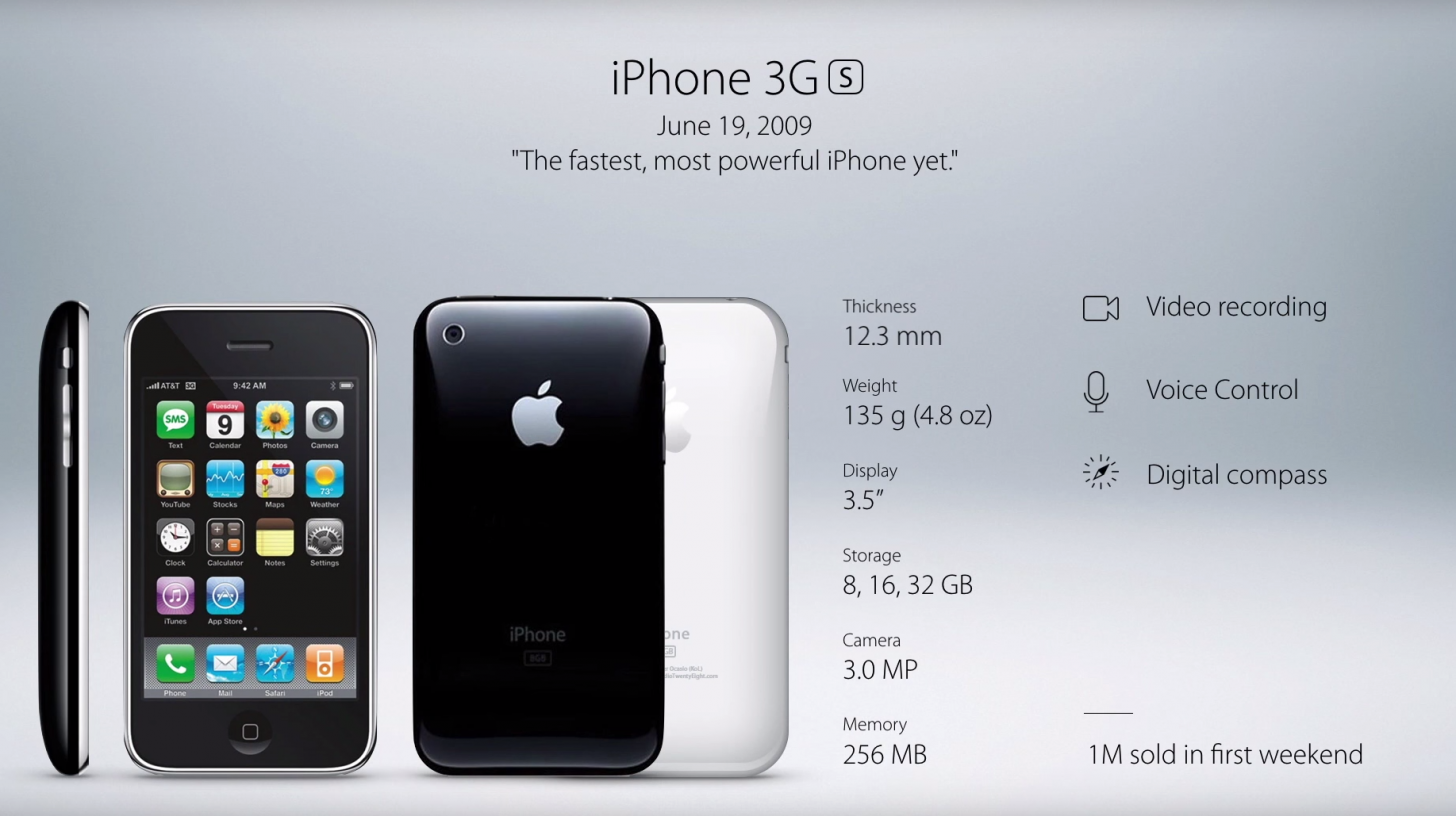
Apple introduced the 32 GB storage option with the iPhone 3GS, doubling it from the first iPhone. Clearly, introducing the App Store changed things quickly. Between photos, music, and apps, 16 GB just wasn't going to cut it. The camera got an upgrade to 3MP and added video recording. Apple also added Voice Control, although we’d have to wait a couple more years before the introduction of Siri.
iPhone 4
Release Date: June 24, 2010
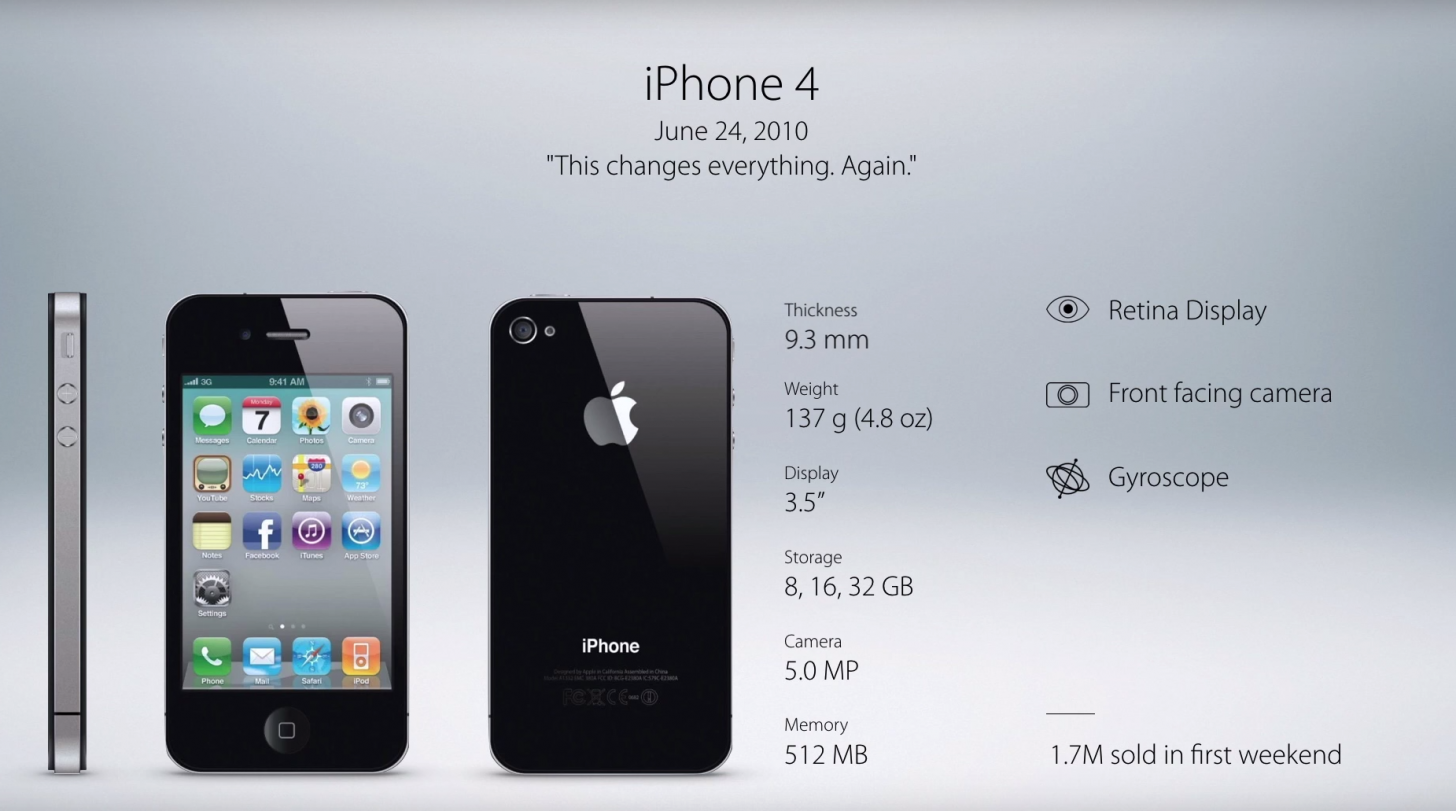
Now we’re getting somewhere. The iPhone 4 was the first iPhone to have a front-facing camera. Little did Apple know, selfies would take over the world. The iPhone 4 also got a Retina display. With 512 MB of memory, it was equipped to handle a lot more than even the iPhone 3GS, which only had 256 MB of memory. You can see the technology was beginning to look a little more familiar, but 32 GB was still the maximum amount of storage the iPhone could hold.
iPhone 4S
Release Date: October 14, 2011
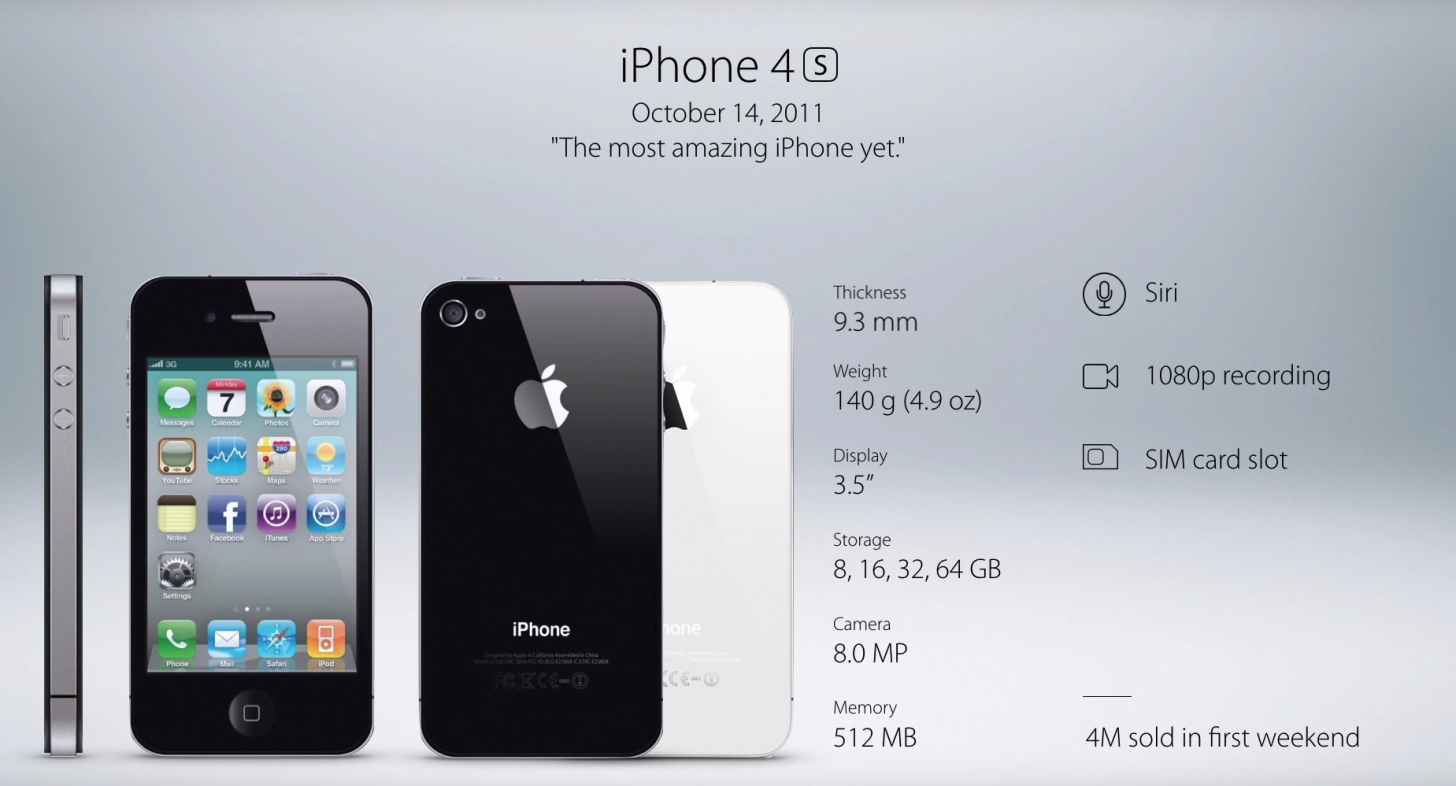
Talk about a huge difference between the iPhone 4 and the iPhone 4S: the camera went from 5MP to a whopping 8MP. Now, that’s an upgrade. Apple also introduced the 64 GB storage option but kept the memory at 512 MB. Video could then be recorded in 1080p. Oh, I can’t forget—hello, Siri! Apple sold four million units of the iPhone 4S in its first week.
iPhone 5
Release Date: September 21, 2012

Apple sold 5 million units of the iPhone 5 in its first week. The camera stayed the same but memory was boosted all the way up to 1 GB. You thought 3G was cool? Psh, the iPhone 5 had LTE connectivity. Hello, internet everywhere! Apple also introduced the Lightning connector with the iPhone 5. And for the first time, the screen got bigger! All previous generations' displays were 3.5 inches, but the iPhone 5 was 4 inches.
iPhone 5s & iPhone 5c
Release Date: September 20, 2013
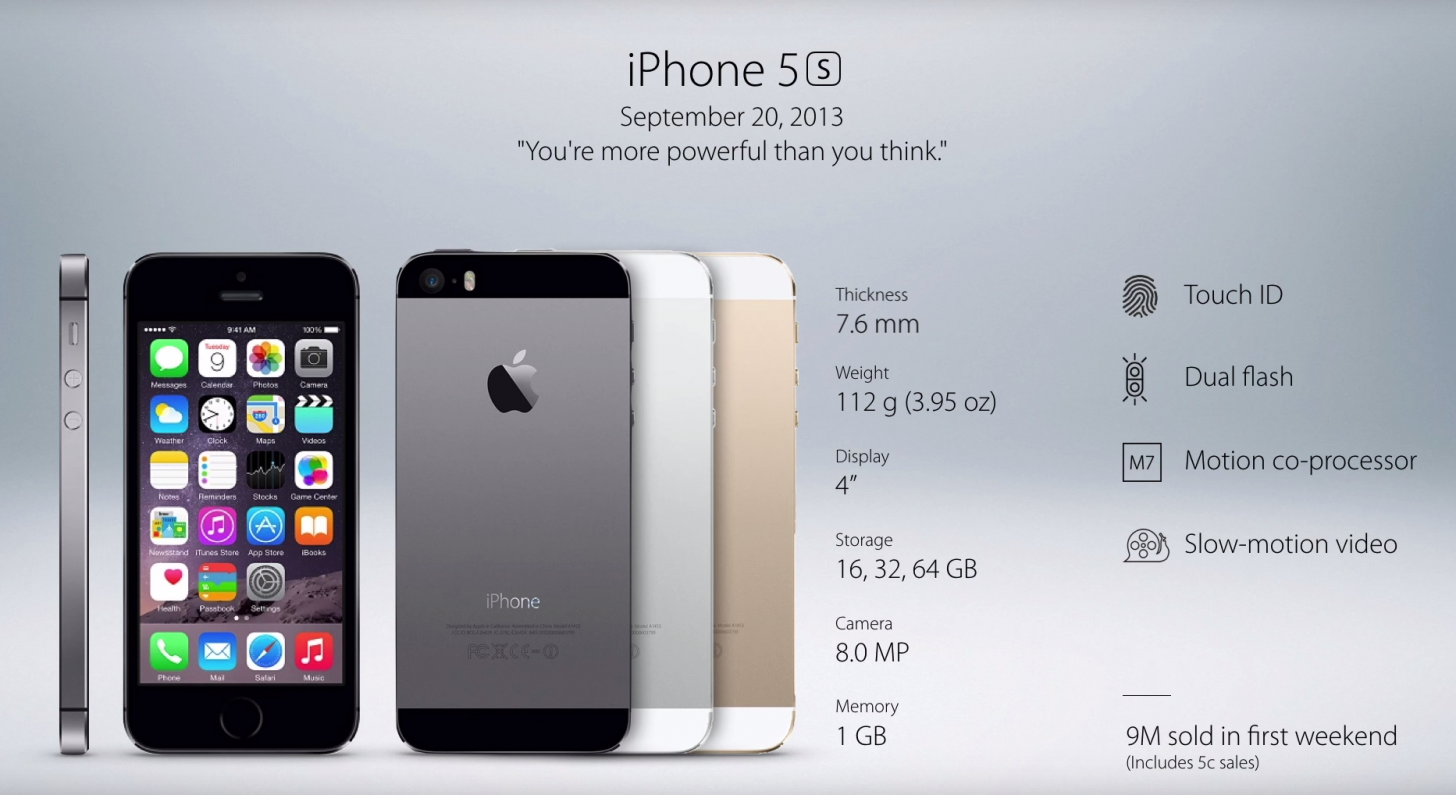
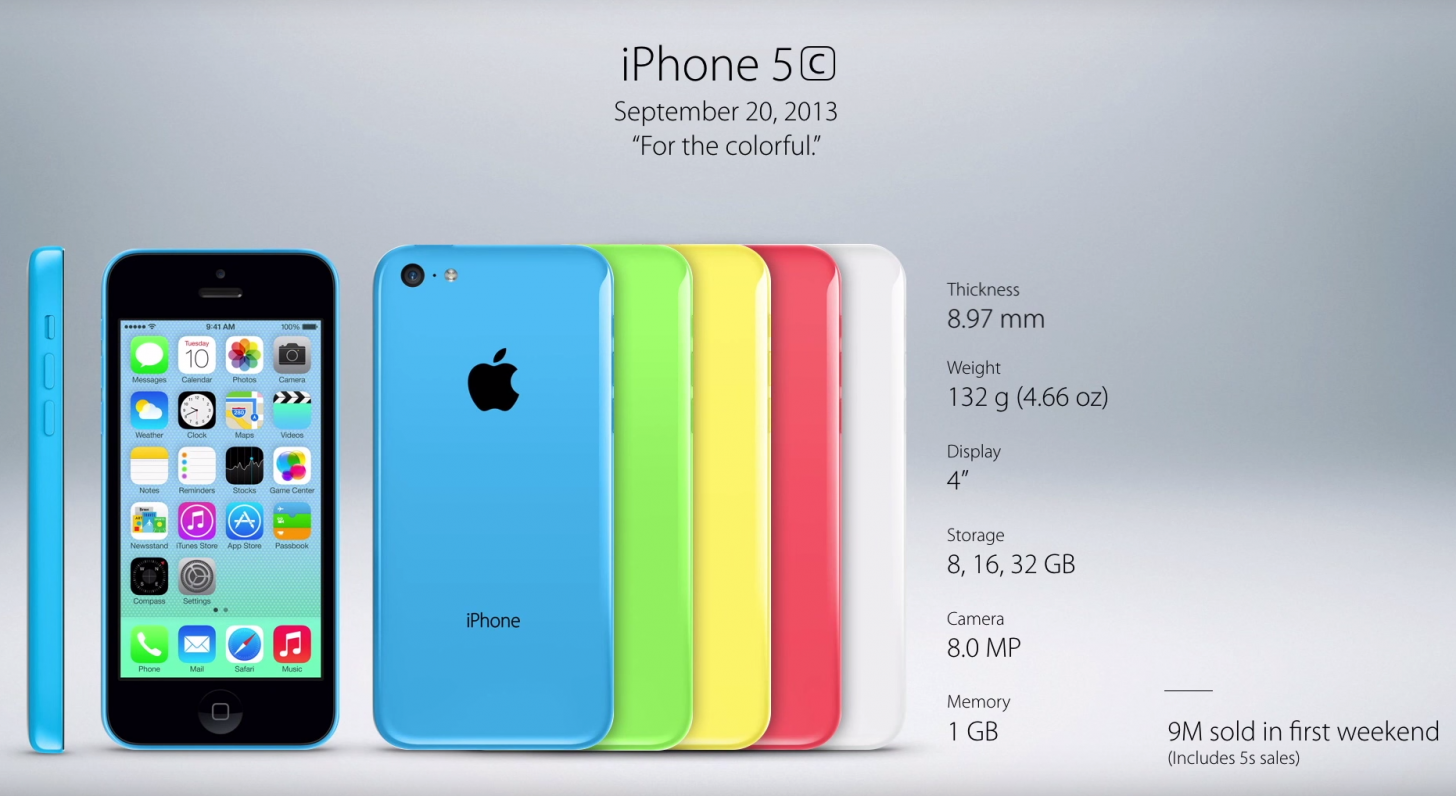
Between the iPhone 5s and the iPhone 5c, Apple sold nine million units in the first week of sales. The iPhone 5c was meant to be slightly more affordable and had a plastic shell. It was available in four different colors, but not too much else was different. The iPhone 5s, on the other hand, introduced Touch ID, dual flash, and slow-motion video. Plus, it included the M7 motion coprocessor, which opened a new realm of possibilities and also helped save battery life.
iPhone 6 & 6 Plus
Release Date: September 19, 2014
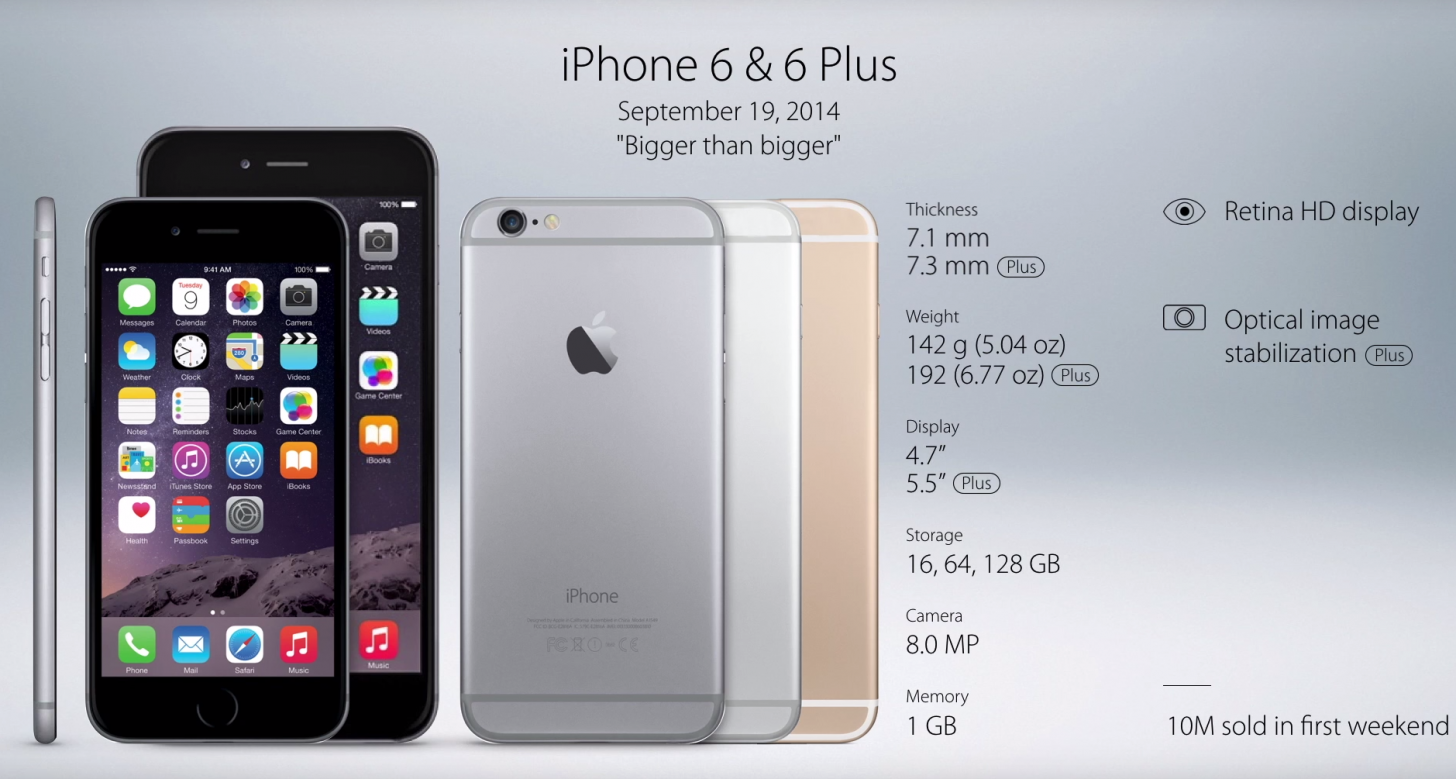
Apple tends to make larger leaps between the original model and the S edition than it does from the S edition to a new model. The iPhone 6's internal specs were very similar to those of the iPhone 5s. The biggest difference was having a significantly larger screen and offering an even larger size called 6 Plus. The Retina display became HD, and the option to get an iPhone with 128 GB of storage became available. But the amount of memory was the same, and the camera didn't see a megapixel upgrade. But it didn't matter—Apple sold 10 million units in the first week.
iPhone 6s & 6s Plus
Release Date: September 19, 2015
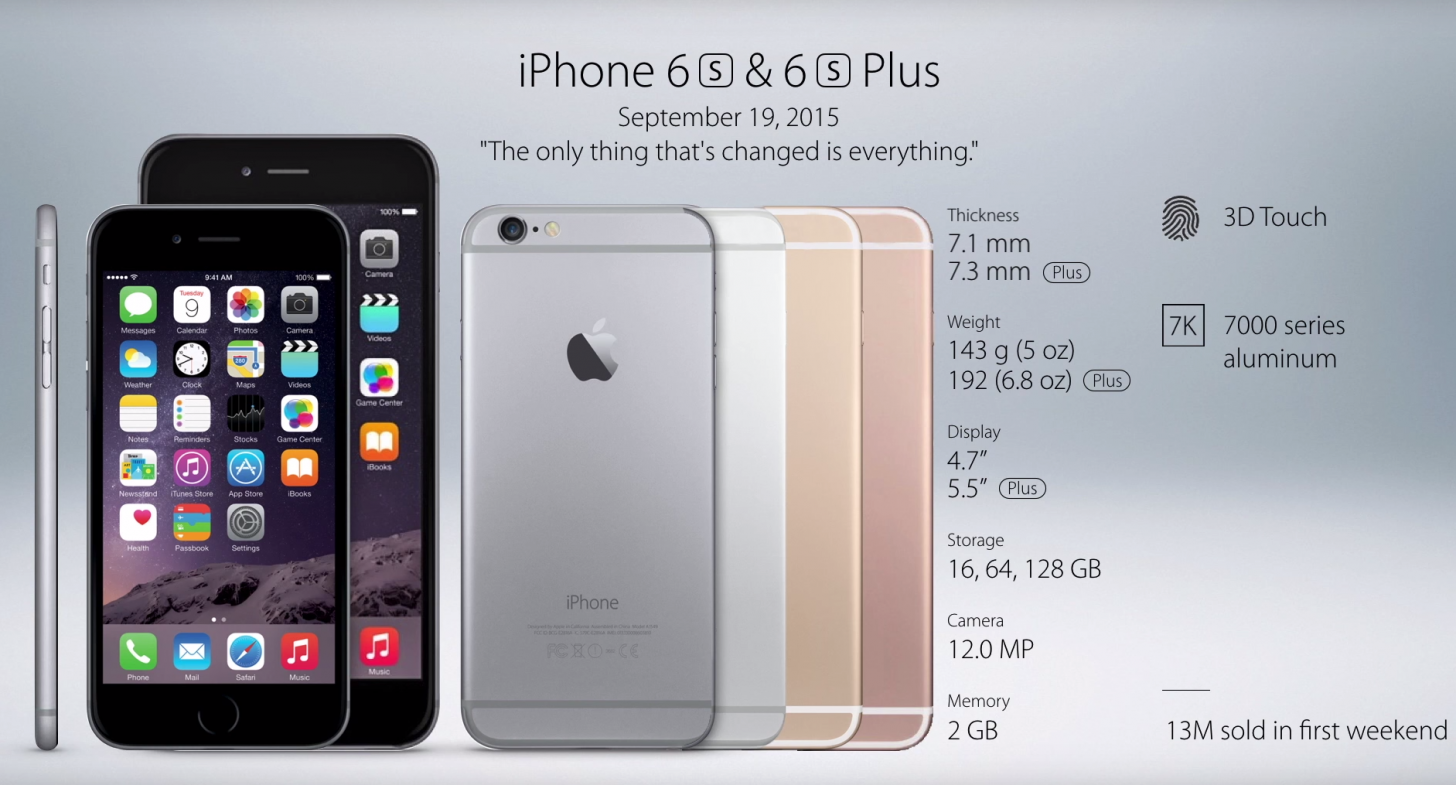
The 6s changed everything. Well, not everything; it basically looked the same. But inside, Apple upgraded the iPhone 6s quite a lot. The camera made a huge leap forward going from 8MP to 12MP. The memory was also doubled from 1 GB to 2 GB. After the iPhone 6 had some bending issues (#bendgate), Apple gave the iPhone 6s 7000 series aluminum to make sure that never happened again. Last but not least, 3D Touch was introduced.
iPhone SE
Release Date: March 31, 2016
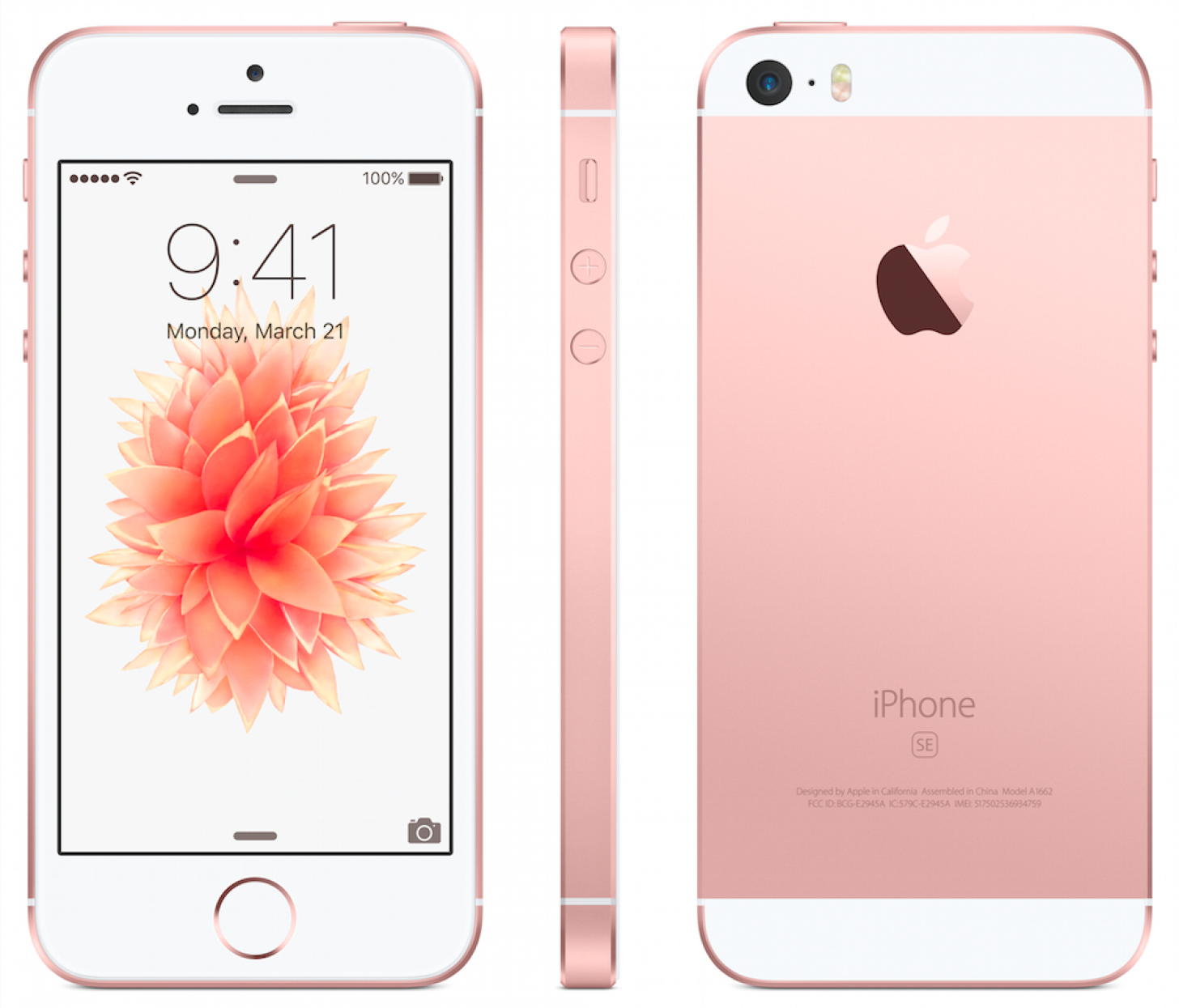
Don’t think I’ve forgotten the iPhone SE. It had all the awesome internal specs of the iPhone 6s in a small package and without 3D Touch. But overall, the iPhone SE was introduced as a more affordable option that people really loved.
iPhone 7 & 7 Plus
Release Date: September 16, 2016

Apple finally dropped the 16 GB base model option, with iPhone 7 and iPhone 7 Plus base models starting at 32 GB of storage and going up to 256 GB. Apple also introduced a new shiny Jet Black color. The iPhone 7 Plus proved to be more popular than previous Plus models due to its new dual camera, which made a significantly improved zoom feature possible, and Portrait mode, a software update that let iPhone 7 Plus users take impressive photos using Depth of Field. Perhaps the most controversial feature of the iPhone 7 and 7 Plus was the one Apple removed: the headphone jack. The new iPhones shipped with EarPods that plugged into the Lightning port and an adapter for traditional headphones. Apple introduced its wireless AirPods at the same event it announced it was eliminating the headphone jack. Apple stopped supporting updates for iPhone 7 and 7 Plus once iOS 16 launched in September 2022.
iPhone 8 & 8 Plus
Release Date: September 22, 2017

The iPhone 8 and 8 Plus introduced us to wireless charging with the glass cover on the back of the iPhone. The camera was awesome, with upgraded tools for editing and filtering our images. The true-tone display improved the viewing experience by automatically reducing blue-light exposure. Users eventually (mostly) got used to not having a headphone jack and began adapting to the wireless lifestyle. Apple stopped supporting updates for the iPhone 8 line once iOS 17 launched in September 2023.
iPhone X
Release Date: November 3, 2017

Skipping right over the iPhone 9, the iPhone X was released 10 years after the original iPhone. The iPhone X included an extra front-facing camera that let us take amazing selfies in Portrait mode. Sure, other iPhones let us take cool-looking photos, but the iPhone X included Portrait mode for the front-facing camera, and we fell in love at first aperture. Apple stopped supporting updates for the iPhone X once iOS 17 launched in September 2023.
iPhone XS & XS Max
Release Date: September 21, 2018

Apple announced the XS and XS Max at its September 2018 event in the Steve Jobs Theater. These models were well named, as they were definite upgrades along the lines of the iPhone X. Both models had the front-facing camera for Portrait-mode selfies. The displays were edge to edge, and it all looked great with the Super Retina HD display. The biggest upgrade might be the smallest; the A12 bionic chip increased the processing power while decreasing battery drain.
iPhone XR
Release Date: October 26, 2018

The iPhone XR was also announced at the September 2018 event but wasn't available right away. Because it was the cheaper of the new models, quite a few people decided to wait for the XR to be available. These iPhones were smaller than the XS and XS Max (but still bigger than the 7 and 8 Plus). The display was not as crisp as the XS and XS Max, but with the Liquid Retina HD display, the difference wasn't too noticeable. This model also had a front-facing camera and came in way more colors than the XS or XS Max.
iPhone 11
Release Date: September 20, 2019

The iPhone 11 was the least expensive of Apple's annual line at the time, but still had enough new features to be in the running for 2019's most popular iPhone. The device features a 6.1-inch Liquid Retina display, and comes in six crisp colors. The most exciting addition may have been the second camera on the back of the 11, both 12MP, and offering wide and ultra-wide lenses.
iPhone 11 Pro
Release Date: September 20, 2019
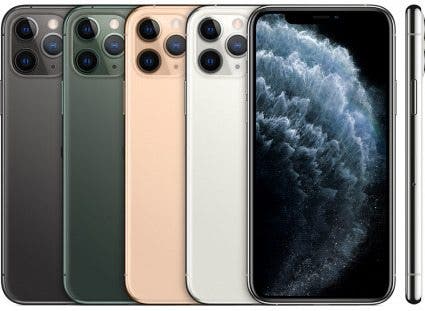
For Apple customers looking for a smaller phone with a top-of-the-line display, the iPhone 11 Pro was perfect. The 5.8-inch Super Retina XDR display was Apple's most crisp and clear to date. This phone featured not two, but three, 12 MP HDR camera lenses, offering wide, ultra-wide, and telephoto lenses. The color options were more muted than the iPhone 11, but there was always the option to add a flashy case!
iPhone 11 Pro Max
Release Date: September 20, 2019
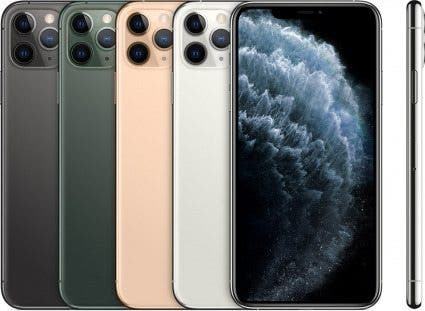
Apple's largest and most expensive phone of 2019 was the iPhone 11 Pro Max. The display was Apple's Super Retina XDR, as with the 11 Pro, but sized at 6.5-inches. The Pro Max featured the same, three-lens camera setup as the 11 Pro, as well as the same color choices, making size nearly the only difference between the devices.
iPhone SE (second-generation)
Release Date: April 24, 2020

The 2020 iPhone SE is the second of its kind and was loved by those who prefer smaller iPhones. Apple took a few cues from the past with this throwback iPhone. The 4.7-inch Retina HD display and Home button with Touch ID hearken back to the original iPhone SE, and with a similarly low price. The second-generation SE offered many of the features of Apple's most expensive iPhones, including an A13 Bionic chip, advanced camera system with Portrait mode and Depth Control, high-definition video, wireless charging capability, and long battery life.
iPhone 12 mini
Release Date: November 13, 2020
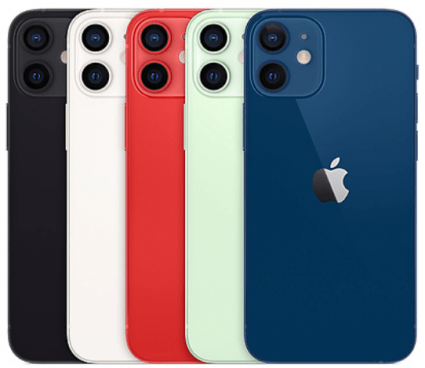
The iPhone 12 mini was a surprisingly small but still very powerful addition to the iPhone family. This thin and incredibly light smartphone measured just 5.4 inches and included the new, powerful A14 Bionic chip for a considerable boost in performance over previous models. It also featured Apple's latest Super Retina XDR OLED display and a host of camera upgrades, but still came with a dual-lens arrangement. The only notable differences between the iPhone 12 mini and the iPhone 12 were that the mini was smaller and had an estimated battery life that's two hours shorter than that of the larger iPhone 12.
iPhone 12
Release Date: October 23, 2020

The 6.1-inch iPhone 12 had exactly the same features, camera specs, and processing capabilities as the 12 mini, except that it was estimated to have a 17-hour video playback compared to the iPhone 12 mini's 15 hours. This mid-range model also included the dual-lens camera, which was good enough for everyday users. However, Apple did include some impressive upgrades to their higher-end iPhone 12 Pro and Pro Max phones for those who chose their iPhones for their camera capabilities,
iPhone 12 Pro
Release Date: October 23, 2020

The iPhone 12 Pro boasted some very fancy camera and color upgrades as compared to the 12 and the 12 mini, but came in the same 6.1-inch screen size as the iPhone 12 and included all of the baseline features present in the budget models. New camera features introduced in 2020 include a triple-lens arrangement like we saw with the iPhone 11 Pro models, but with LiDAR scanning, improved Night Mode, and enhanced zoom range and lens functions. Both iPhone 12 Pro models included the fastest aperture ever used in an iPhone. Apple added RAW photos for superior pro editing capability and included Dolby Vision up to 60 frames per second in the Pro models.
iPhone 12 Pro Max
Release Date: November 13, 2020

The iPhone 12 Pro Max, featured all of the benefits of the 12 Pro, but with some upgrades and a considerable size difference. The 6.7-inch Pro Max claimed an 87 percent improvement in the way it functions in low light over the iPhone 11 models and features 5x zoom, which was a big deal for those who use their iPhones for professional or near-professional photography projects. The most distinguishing characteristic of this iPhone was its screen size.
iPhone 13
Release Date: September 24, 2021

The iPhone 13 line's base model maintained many of the design features (re-)introduced in the iPhone 12 series, but it also came with a 20 percent smaller notch, accommodated by a new camera layout. It runs on the A15 chip, which is an upgrade over the previous generation of iPhones, and the camera featured some significant improvements, including Cinematic mode and Photographic Styles. Battery life was also improved for this model, and it came in the following colors: pink, blue, midnight, starlight, and PRODUCT(RED). A big selling point for the iPhone 13 was the price point: it started at the same price as the iPhone 12 did when released, but its base model offered double the storage space. The screen size remained the same at 6.1 inches.
iPhone 13 mini
Release Date: September 24, 2021

Like its bigger siblings, the iPhone 13 mini ran on Apple's A15 Bionic chip, making it a powerhouse in a small package. Its battery life improved up to an hour and a half over the iPhone 12 mini. As with other iPhone 13 models, the mini featured big camera improvements, and the most storage available of any mini model at a maximum storage capacity of 512 GB. Its design and physical size also largely mirrored the iPhone 12 mini, clocking in with a screen size of 5.4 inches. It featured the same color options as the iPhone 13 and a starting price of $699 for 128 GB.
iPhone 13 Pro
Release Date: September 24, 2021

The iPhone 13 Pro featured a 6.1-inch Super Retina XDR display with ProMotion, but its big draw was the inclusion of a Telephoto camera, in addition to the Wide and Ultra Wide cameras that came with the iPhone 13 and iPhone 13 mini. It came with a LiDAR scanner for Night Mode photography and offered a 1 TB model for more storage than any iPhone has ever offered before. It needed it, considering all the new camera features made for pretty bulky file sizes. It was also powered by the A15 chip and came in silver, graphite, gold, and sierra blue.
iPhone 13 Pro Max
Release Date: September 24, 2021

The iPhone 13 Pro Max offered everything the Pro did, but bigger. Its screen was the same size as the iPhone 12 Pro Max: 6.7 inches diagonally. It, like the rest of the iPhone 13 line, was a bit heavier and thicker than its predecessor, despite sharing the same dimensions otherwise. In addition to getting a chip upgrade to the A15, the iPhone 13 Pro Max also got an additional GPU, for a total of five. It, too, offered a 1 TB storage capacity option, and Apple said the battery was able to support up to 28 hours of non-stop video playback. With the heftiest price tag of any iPhone released up to that point, the iPhone Pro Max was the ultimate top-of-the-line model available.
iPhone SE (third-generation)
Release Date: March 8, 2022

The 2022 iPhone SE 3 was the third of its kind. It maintained the 4.7-inch Retina HD display and Home button with Touch ID, which hearkened back to the original iPhone SE, and with a similarly low price. The third-generation SE offered many of the features of Apple's most expensive iPhones, including 5G, an A15 Bionic chip, an advanced camera system with Portrait mode, Depth Control, high-definition video, Deep Fusion, wireless charging capability, and long battery life.
iPhone 14 & 14 Plus
Release Date: 14 - September 16, 14 Plus - October 7 2022

Instead of the iPhone mini, Apple brought the Plus back for iPhone 14, with the slightly larger display that had been restricted to the exclusive Pro and Pro Max models in recent years. The iPhone 14 models came with some impressive safety-focused features, including Crash Detection (which automatically detects a car wreck and contacts emergency services in the event of a crash) and Emergency SOS via satellite, a feature with the capability to connect to emergency services via satellite if you find yourself in distress while out of range of Wi-Fi or cellular. The Emergency SOS via satellite was a first in the smartphone arena, since connecting to a satellite was previously only possible through bulky expensive devices built specifically for this purpose. The iPhone 14 & 14 Plus also offered a new dual-camera system, designed to take low-light photography to the next level (goodbye, grainy nighttime photos!).
iPhone 14 Pro
Release Date: September 16, 2022

Similar to the iPhone 14 base model, the 6.1" iPhone 14 Pro debuted with the same Crash Detection and Emergency SOS via Satellite safety features. In addition to the new A16 Bionic chip, it also got a surprising upgrade, with a new "Dynamic Island" feature where the notch used to be. While the notch wasn't gone, it now adapted to whatever you were doing to more seamlessly display notifications and background activities. It also featured an Always-On display, made possible by low-energy components, so that the time and widgets on your lock screen were always viewable. In perhaps the most impressive update, the iPhone 14 Pro and Pro Max offered a 48 MP camera (a sharp jump from the 12 MP camera offered by the previous model). This translated to a more flexible camera, with more options for framing and cropping, as well as better low-light shots so you could worry less about the lighting and more about capturing the moment.
iPhone 14 Pro Max
Release Date: September 16, 2022

Its screen was the same size as the previous Pro Max generation: 6.7 inches diagonally. As expected, the iPhone 14 Pro Max had the same upgrades the other iPhone 14 models had, including the Always-On display, Dynamic Island, A16 chip, Emergency SOS via Satellite, Crash Detection, and the impressive 48 MP camera. It also offered a staggering 29-hour video playback battery life and the brightest and clearest display of any iPhone ever. With the new 48 MP camera, you didn't want to stop taking photos, as this camera helped you to capture more colors, textures, and detail than ever before!
iPhone 15 & 15 Plus
Release Date: September 12, 2023

The iPhone 15 and 15 Plus were unveiled at Apple's September 2023 event. These models featured the same 6.1 and 6.7" Super Retina XDR displays as the iPhone 14 and 14 Plus, but the 15 and 15 Plus came with a new feature: color-infused glass backs. The iPhone 15 and 15 Plus also added the Dynamic Island, only available in the iPhone 14 Pro and Pro Max. Both models featured a USB-C, rather than a Lighting port.
The iPhone 15 and 15 Plus also had a chip upgrade, moving up to the A16 Bionic Chip. The Advanced dual-camera system now featured 48MP, Super-high-res photos, and Next-gen portraits with Focus and Depth control on both models. Also included were important safety features like Crash Detection and Emergency SOS via satellite.
iPhone 15 Pro
Release Date: September 12, 2023

The iPhone 15 Pro was unveiled at Apple's September 2023 event. New features this iPhone model included a titanium frame, USB-C port, and the brand new Action button. The Action button turned the Ring/Silent switch into a customizable button that can activate the camera, turn on the flashlight, set Accessibility options, change Focus modes, open a note, start a Voice Memo, and even run custom Shortcuts.
Similar to the iPhone 15 base model, the 6.1" iPhone 15 Pro offered Crash Detection and Emergency SOS via satellite safety features. The new A17 Pro Bionic chip allowed for the best iPhone graphics performance to date (great for gaming), while the camera system now featured next-generation portraits with Focus and Depth Control.
iPhone 15 Pro Max
Release Date: September 12, 2023

The iPhone 15 Pro Max was also unveiled at Apple's September 2023 event. Just like the 15 Pro, the 6.7" iPhone 15 Pro Max included a titanium frame, USB-C port, and Action button. The Pro Max also offered safety features, including Crash Detection and Emergency SOS via satellite safety features. The A17 Pro Bionic chip combined with its larger screen size allowed for the best iPhone gaming performance to date, with less lag, more speed, and immersive, detailed graphics. The camera system now features next-generation portraits with Focus and Depth Control.
iPhone 16 & 16 Plus
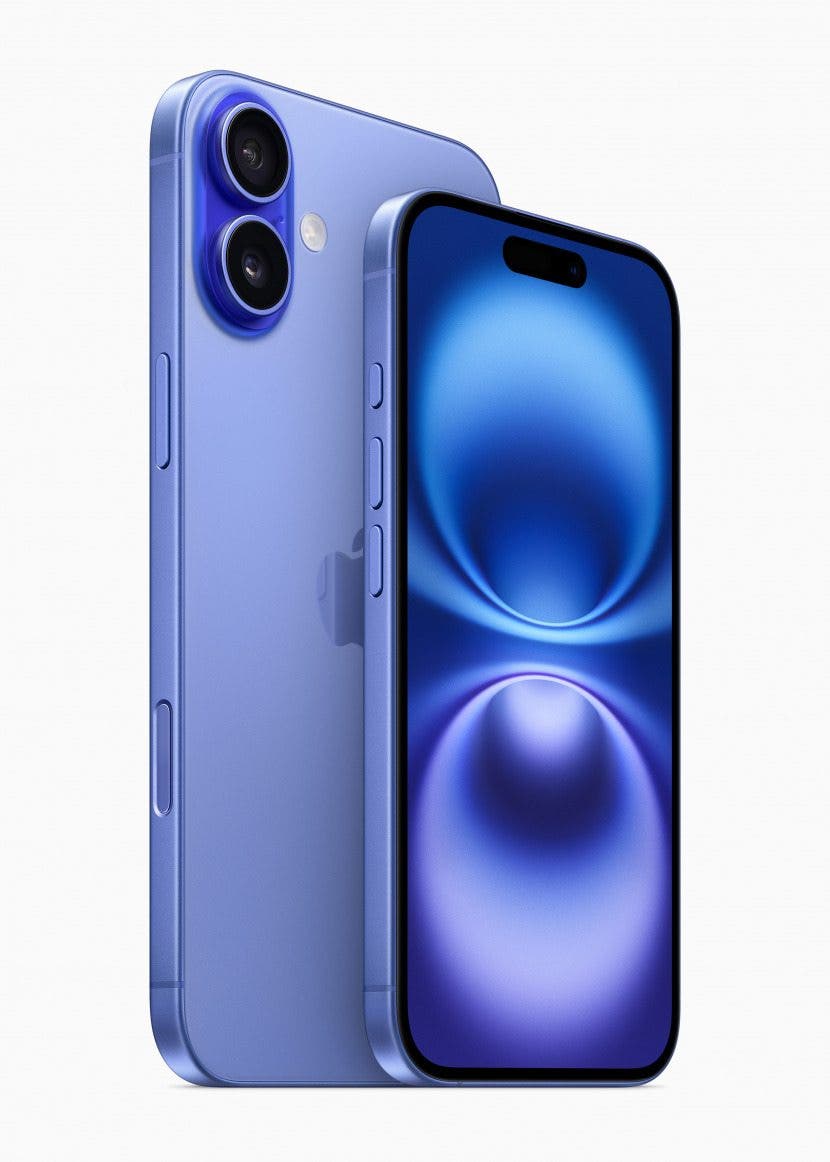
Release Date: September 20, 2024
Apple announced the iPhone 16 and 16 Plus at its September 2024 "It's Glowtime" event. The new 6.1-inch and 6.7-inch phones may be the base models of the iPhone 16 series, but they're still nothing to sneeze at. Apple skipped a chip and went straight from the A16 to the A18 silicon chip rather than using the A17 that was introduced in the 15 Pro. The 16 and 16 Plus also have an Action button (previously only available on the 15 Pro), the new Camera Control button, a bigger battery, and a better 48 MP rear-facing camera.
iPhone 16 Pro & Pro Max
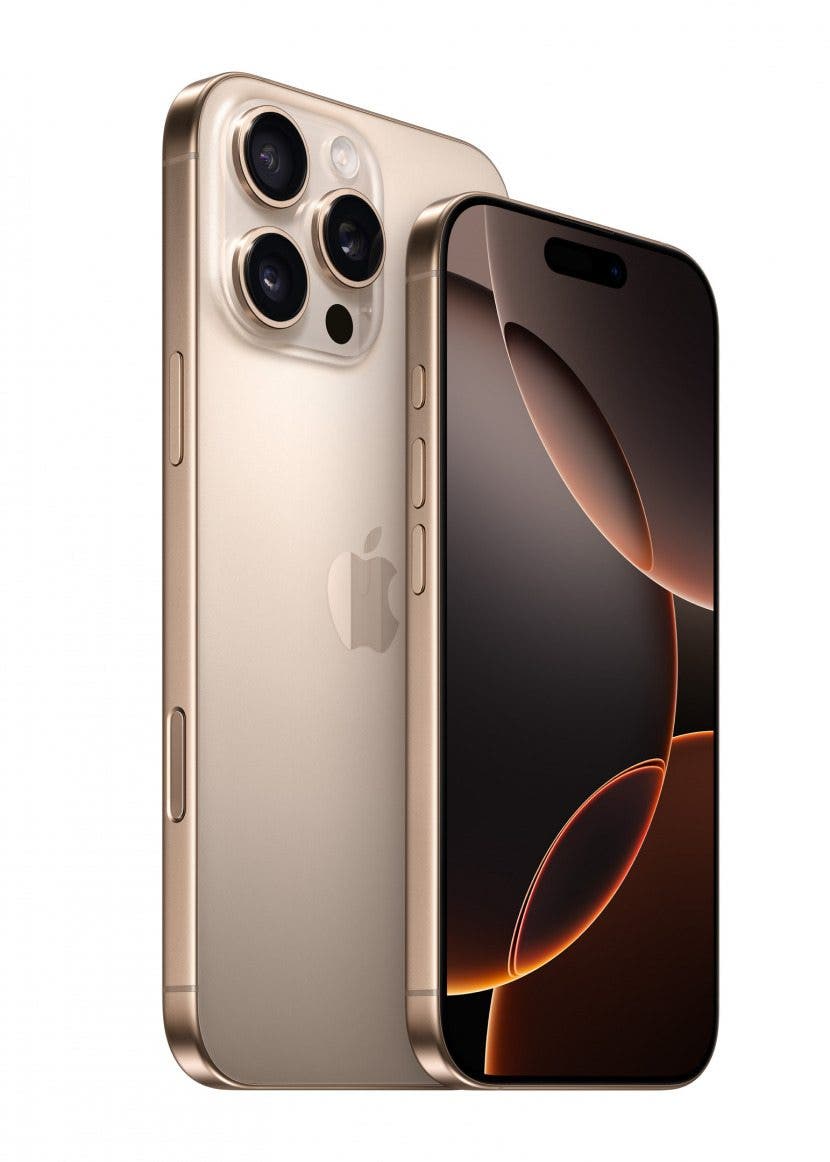
Release Date: September 20, 2024
The iPhone 16 Pro was also unveiled at Apple's September 2024 event. The newest Pro model iPhones come in 6.3-inch and 6.9-inch sizes with a thinner border and titanium frame. The 16 Pros come in black, white, natural, and desert. Fittingly, the iPhone16 Pros come with the Pro version of the A18 chip. In addition to the new Camera Control button, the 16 Pros also have a bigger battery, big camera improvements, a better mic for audio recording, and the ability to edit sound after video capture.
iPhone 16e
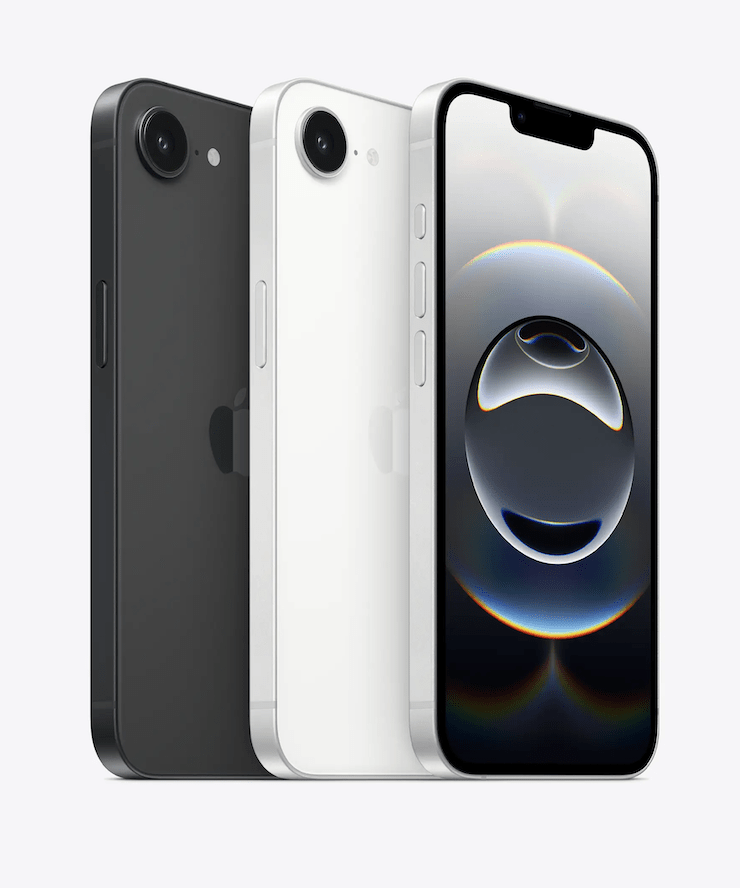
Release Date: February 28, 2025
The iPhone 16e was independently announced in February 2025. This newest budget model is slightly more expensive than the previous SE (3rd generation) but cheaper than the rest of the iPhone 16 lineup, despite sharing many similar features. The iPhone 16e has a 6.1-inch display with OLED. The new budget iPhone model also has Apple Intelligence and an A18 chip with a four-core GPU (one less GPU than the rest of the iPhone 16 lineup). The iPhone 16e has a notch rather than a Dynamic Island and only has one camera lens capable of 2x optical zoom.
iPhone 17

Release Date: September 19, 2025
The iPhone 17 was revealed during Apple's September 2025 event. The iPhone 17 comes equipped with a 6.3" display and an aluminum body, a changeup from the titanium materials used in last year's model. The screen is now a ProMotion display, which can refresh at 120Hz. This new iPhone also has a new square-shaped front-facing camera sensor (which Apple calls a "Center Stage" camera) that can capture selfies in both portrait and landscape without rotating the phone. The rear cameras consist of a Fusion Main camera and a Fusion Ultra Wide camera, both at 48 MP. The iPhone 17 also carries over the Camera Control from the iPhone 16 and is Apple Intelligence-ready. Notably, the base iPhone 17 only comes in one size for the first time since the iPhone 11. There is no iPhone 17 Plus or iPhone 17 mini this year.
iPhone 17 Pro & Pro Max
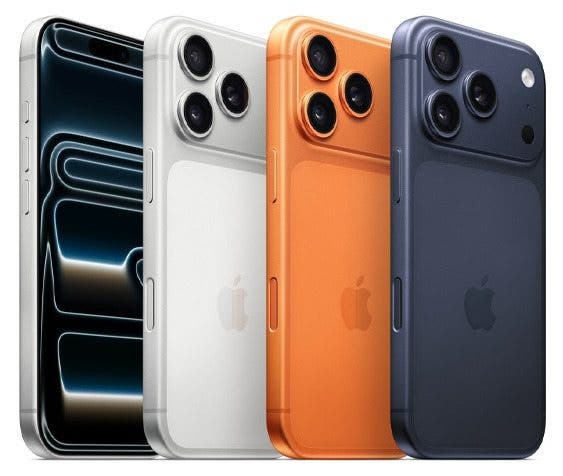
Release Date: September 19, 2025
The iPhone 17 Pro and Pro Max were revealed alongside the iPhone 17 and come with all the same upgrades as the base model, plus a few extras. The Pro models have an additional rear camera, a 48 MP Fusion Telephoto lens, allowing for optical zoom up to 8x and up to 40x digital zoom. The iPhone 17 Pro and Pro Max also have a new thermal management system through a vapor chamber, which helps to evenly distribute heat throughout the device to prevent overheating. These two iPhones also offer the best battery life in an iPhone, with the iPhone 17 Pro Max boasting up to 39 hours of video playback.
iPhone Air
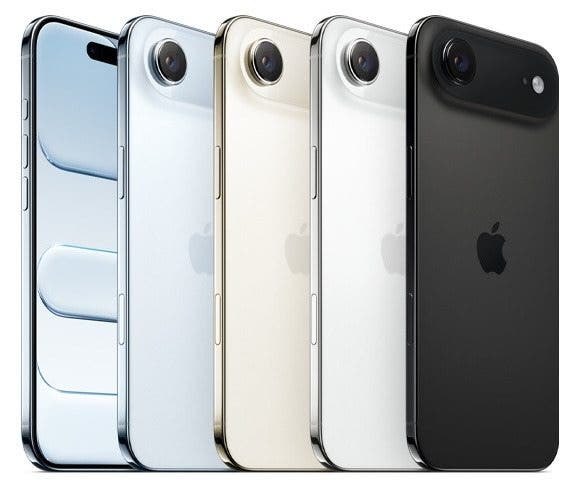
Release Date: September 19, 2025
Apple introduced the iPhone Air alongside its iPhone 17 lineup. This is the thinnest iPhone ever. It has a 6.5" display and all the same upgrades found in the base iPhone 17, packed into a thinner titanium frame. Rather than a Dual Fusion camera, the rear camera is just a single 48 MP Fusion Main camera.
iPhone Generations to Come
Apple has released a total of 51 iPhones over the years (including the latest iPhone 17 models). We've given you a complete look at each iPhone evolution, starting when Steve Jobs unveiled the original iPhone in 2007. As you can see, the iPhone has gone through a lot of changes, from a 16 GB web browser to a 1 TB all-in-one camera, workspace, and entertainment center.
In the early days, Apple released one iPhone per year. That gradually changed as the releases of new models got closer and closer together from 2010 to 2013. With the September 2013 rollout, though, Apple released both the iPhone 5s and the iPhone 5c, ushering in an era of two iPhone releases per year. 2017, 2018, and 2019 each saw the release of three more iPhone models, and then in 2020, the tech giant shocked the world. Not only did it release the iPhone SE (second-generation) in April, the company also rolled out the four iPhones in the 12-series lineup in its delayed fall announcement.
At its September 2021 event, Apple revealed the four new phones that comprise the iPhone 13 lineup, then in March 2022 released the iPhone SE (third-generation). However, in the September 2022 event, the iPhone 14 lineup reverted to only three new phones, marking the end of the less popular iPhone mini. Apple released the exciting new iPhone 15 in September 2023 and moved back to the four-iPhone lineup, minus the mini. The iPhone 16 lineup debuted in September 2024 with new chips capable of handling Apple Intelligence. Now, Apple has revealed the all-new iPhone 17 lineup, along with the thinnest iPhone ever, the iPhone Air. We're looking forward to seeing the upgrades and new features making use of AI in this generation of Apple iPhone!
There you go, that's all iPhones in order! We loved learning about the history of the iPhone over the years, and we hope you did, too. Be sure to check back in and stay up-to-date with all the newest models as the iPhone continues to evolve and grow. If you think it might be time to upgrade your iPhone to a newer model, check out our article answering the question, how long should an iPhone last?
FAQ
- Why did Apple skip some iPhone numbers? Why Did Apple Skip Some iPhone Numbers? There isn't an iPhone 2 because after the first generation, the next iPhone featured 3G internet connectivity, so iPhone 3! Why did Apple skip iPhone 9? Apple went straight to the iPhone X (pronounced "ten") because it was released ten years after the first iPhone release.
- How can I help my iPhone last longer? One of the best ways to help your iPhone last longer is to preserve the health of the lithium-ion battery by avoiding damaging charging practices and running unnecessary power-hungry background processes. To learn more, check out how to save battery on an iPhone.
- Did the first iPhone have a camera? Yes, the first iPhone did, though not an especially powerful or clear one. Apple has shown a company initiative to continue improving upon iPhone cameras with each release. The newest iPhones offer incredible detail and professional-level finishing with the stock camera and photo editing options. A great example of this is the added ability in the iPhone 15 that allows you to easily blur a photo on your iPhone to place more focus on the subject.
We hope this article answers any questions you have about the evolution of phones in Apple's lineup. This iPhone evolution chart will continue to grow over the years, and we'll be here to keep it updated: from the new iPhone 16e and beyond. Maybe in 2027, we'll even get an iPhone XX! If you have other Apple devices of an unknown generation lying around, you might also be interested in learning how to find your Apple Watch model number or how to perform an AirPods model number check.
Image Credits: Apple and Youtube / Greg Wyatt

Conner Carey
Conner Carey's writing can be found at conpoet.com. She is currently writing a book, creating lots of content, and writing poetry via @conpoet on Instagram. She lives in an RV full-time with her mom, Jan and dog, Jodi as they slow-travel around the country.
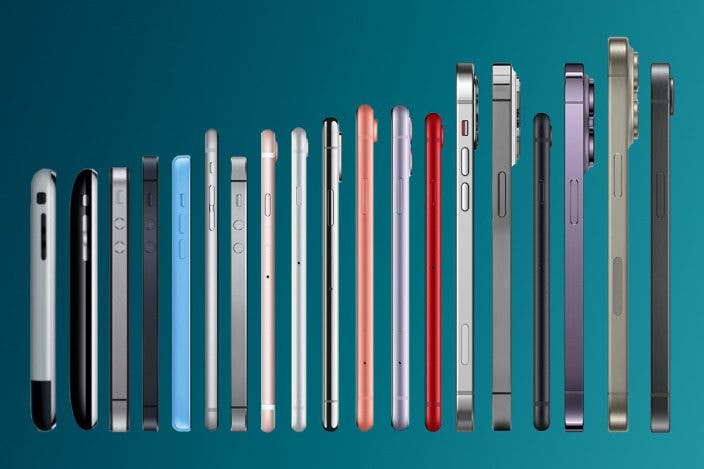

 Leanne Hays
Leanne Hays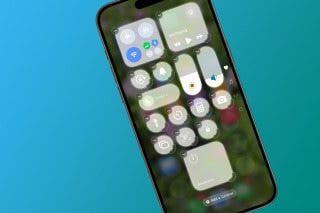
 Rhett Intriago
Rhett Intriago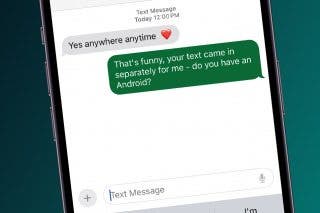

 David Averbach
David Averbach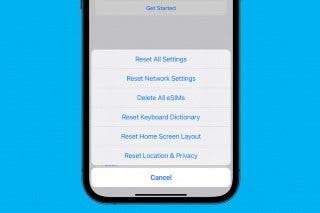
 Olena Kagui
Olena Kagui
 Michael Schill
Michael Schill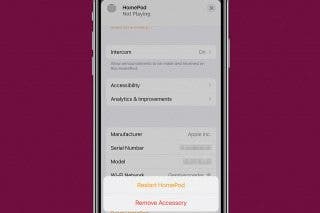
 Amy Spitzfaden Both
Amy Spitzfaden Both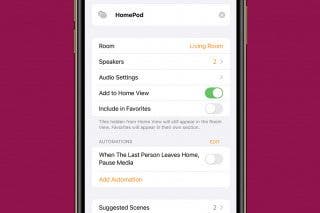
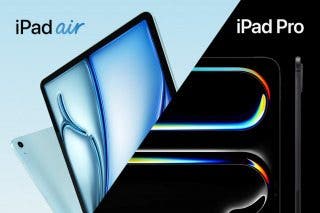
 Cullen Thomas
Cullen Thomas


